Goat Cheese Benefits: 4 Reasons It’s Healthier Than Cow Cheese
From nutrition to sodium content, goat cheese has the edge over cow cheese in many aspects.
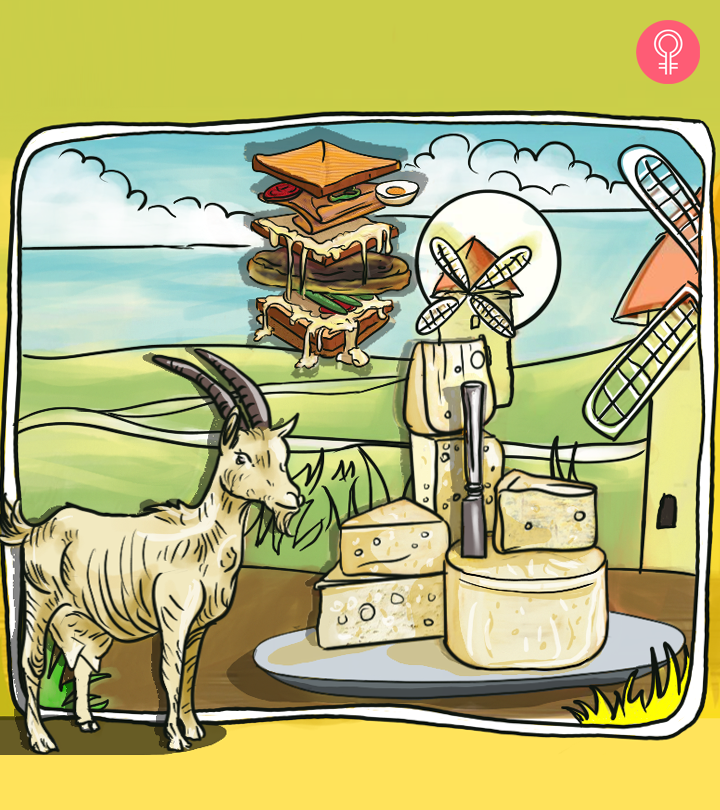
Image: StyleCraze Design Team
The benefits of goat cheese are due to the fact that it is comparatively lower in calories than cow cheese. Therefore, this cheese is ideal for you if you love having chunks of cheese every day but are watching your calories.
Goat cheese is richer in minerals, contains lower sodium levels, has a less-harmful casein variant, and lesser cholesterol and saturated fatty acids than regular cheese.
In this article, we explore goat cheese nutrition, its benefits, its potential side effects, how to make it, and some of its easiest and most delicious recipes to try at home. However, is goat cheese good for you? Keep reading to find out!
 Know Your Ingredient: Goat Cheese
Know Your Ingredient: Goat CheeseWhat Is It?
A creamy, white dairy product produced using the milk of domestic goats.
What Are Its Benefits?
It provides essential minerals and vitamins to the body and may help lower cholesterol levels and reduce the risk of cardiovascular diseases.
Who Can Consume It?
Goat cheese is a great alternative for those who cannot consume cow cheese.
How Often?
You can have a small serving of goat cheese every day.
Caution
Pregnant women should only consume goat cheese made of pasteurized goat milk to avoid health issues like Listeriosis.
In This Article
What Is Goat Cheese?

Goat cheese is made from goat milk and is healthier and better than the cheese made from cow milk.
Goat milk benefits are quite well-known and one of its key benefits is that it’s easy to digest. As a result, the cheese made from goat milk is easy on your gut. It has lesser lactose, lower sodium, smaller and easy to digest fats, and similar if not higher vitamins and minerals levels as compared to cow cheese. You will get a better picture when you look at the nutrition data later.
Like other cheese varieties, goat cheese is available in different types and textures. You have it unripened (fresh) or ripened, and the texture of each is defined as soft, semisoft, firm, or hard (indicating the moisture content).
 Trivia
TriviaYou can either have the unripened, fresh one in your salads or let it age with some microbial cultures and use it similar to aged cow cheese.
But why should you switch from cow cheese to goat cheese? And while we know that all types of cheese benefit our health, what gives goat cheese an upper hand and makes it a healthier alternative? The answers lie in its nutrition and biochemical composition and the effects it has on your body.
Read on to understand what I mean.
Key Takeaways
- Goat cheese is a high-quality protein source and low in fat and calories compared to other dairy products.
- It is abundant in vitamin B12, calcium, and phosphorus and contains probiotics that enhance intestinal health.
- It is most suited for people with lactose intolerance as it is easier for them to digest.
- It promotes strong bones and teeth.
Benefits Of Goat Cheese Over Cow Cheese
1. Has Lesser Saturated Fats and Cholesterol
Goat cheese is a low-fat alternative to regular cheese. It has short and medium-sized fatty acid chains, such as caproic acid, caprylic acid, and capric acid, which are easier to digest (1).
Semisoft type goat cheese contains 22 mg of cholesterol per ounce while cheddar cheese has 28 mg. Lower the cholesterol levels, lower the chances of cardiovascular diseases and liver damage. The accumulated cholesterol derivatives are acted upon by the free radicals, causing damage to your vital organs.
2. Has Lower Sodium levels
The recommended sodium intake for average adults is 2300 mg per day, but it is better to limit it to below 1500 mg per day (2). Excess sodium can lead to fatal conditions like hypertensioni High blood pressure due to elevated force of blood flow hitting the artery walls; blood pressure measures over 140/90. , ischemic attacki Also known as a mini-stroke or a transient ischemic attack, is a brief interruption in the blood flow to the brain that resolves in a matter of minutes but is a warning sign leading up to an ischemic stroke , and renal failurei A kidney disorder where the organ's waste filtering efficiency is reduced, which can cause swelling or high blood pressure/hypertension. (3).
On the other hand, not having enough salt in the diet is also equally dangerous. If you are a cheese lover, you’ll be happy to know that goat cheese has only 118 mg of sodium, whereas, grated parmesan cheese has 511 mg per ounce.
It’s time to switch, isn’t it?
3. Contains Less-Harmful Casein Variant
Casein is the most abundant protein in cow and goat milk. It also contributes a significant chunk to the protein content in cheese. The variant of casein in cow cheese is found to trigger type 1 diabetes and insulin resistance (4).
But goat cheese has a different variant of casein (A2 beta-casein), along with higher calcium (251 mg per ounce), which can protect you from diabetes and increase insulin sensitivity (5).
4. Is Rich In Vitamins And Trace Elements

Although it comes from a tiny and humble herbivore, goat cheese contains more minerals and vitamins than cow cheese. It also increases the absorption of these elements from dietary sources (6).
Notably, it is rich in vitamins A, K, riboflavin, folate, and niacin, which maintain exoskeleton and bone health and assist in the synthesis of red blood cells (RBCs) and blood clotting.
 Quick Tip
Quick TipGoat cheese is the best source of minerals that cannot be produced by your body but are essential for sustenance.
The trace elements (minerals), such as phosphorus, magnesium, calcium, iron, and copper – all of these ensure the smooth functioning of enzymatic processes and synthesis and activation of these enzymes, hormones, and other cofactors.
To get a better idea of the value of fresh (unripened), hard goat cheese, take a look at the nutritional table below (7):
| Nutrition Facts Serving Size 1 ounce (28g) | ||
|---|---|---|
| Amount Per Serving | ||
| Calories | 127 | Calories from Fat 88 |
| % Daily Value* | ||
| Total Fat | 10g | 15% |
| Saturated Fat | 7g | 34% |
| Trans Fat | 0 g | |
| Cholesterol | 29mg | 10% |
| Sodium | 97mg | 4% |
| Total Carbohydrate | 1g | 0% |
| Dietary Fiber | 0g | 0% |
| Sugars | 1g | |
| Protein | 0g | |
| Vitamin A | 10% | |
| Vitamin C | 0% | |
| Calcium | 25% | |
| Iron | 3% | |
| Calorie Information | ||
| Amounts Per Selected Serving | %DV | |
| Calories | 127(532 kJ) | 6% |
| From Carbohydrate | 2.5(10.5 kJ) | |
| From Fat | 87.6(367 kJ) | |
| From Protein | 36.5(153 kJ) | |
| From Alcohol | 0.0(0.0 kJ) | |
| Carbohydrates | ||
| Amounts Per Selected Serving | %DV | |
| Total Carbohydrate | 0.6 g | 0% |
| Dietary Fiber | 0.0 g | 0% |
| Starch | 0.0 g | |
| Sugars | 0.6 g | |
| Fats & Fatty Acids | ||
| Amounts Per Selected Serving | %DV | |
| Total Fat | 10.0 g | 15% |
| Saturated Fat | 6.9 g | 34% |
| Monounsaturated Fat | 2.3 g | |
| Polyunsaturated Fat | 0.2 g | |
| Total trans fatty acids | ~ | |
| Total trans-monoenoic fatty acids | ~ | |
| Total trans-polyenoic fatty acids | ~ | |
| Total Omega-3 fatty acids | ~ | |
| Total Omega-6 fatty acids | 237 mg | |
| Protein & Amino Acids | ||
| Amounts Per Selected Serving | %DV | |
| Protein | 8.5 g | 17% |
| Vitamins | ||
| Amounts Per Selected Serving | %DV | |
| Vitamin A | 489IU | 10% |
| Vitamin C | 0.0 mg | 0% |
| Vitamin D | ~ | ~ |
| Vitamin E (Alpha Tocopherol) | 0.1 mg | 0% |
| Vitamin K | 0.8 mcg | 1% |
| Thiamin | 0.0 mg | 3% |
| Riboflavin | 0.3 mg | 20% |
| Niacin | 0.7 mg | 3% |
| Vitamin B6 | 0.0 mg | 1% |
| Folate | 1.1 mcg | 0% |
| Vitamin B12 | 0.0 mcg | 1% |
| Pantothenic Acid | 0.1 mg | 1% |
| Choline | 4.3 mg | |
| Betaine | ~ | |
| Minerals | ||
| Amounts Per Selected Serving | %DV | |
| Calcium | 251 mg | 25% |
| Iron | 0.5 mg | 3% |
| Magnesium | 15.1 mg | 4% |
| Phosphorus | 204 mg | 20% |
| Potassium | 13.4 mg | 0% |
| Sodium | 96.9 mg | 4% |
| Zinc | 0.4 mg | 3% |
| Copper | 0.2 mg | 9% |
| Manganese | 0.1mg | 4% |
| Selenium | 1.5 mcg | 2% |
| Fluoride | ~ | |
Now that you know what makes this cheese a better choice over cow cheese, I’m sure you are eager to make a batch of it yourself, aren’t you?
Here are some simple and tasty recipes for making goat cheese and using it in other recipes as well. So, let’s get to the kitchen!
How To Make Goat Cheese At Home
You can make fresh goat cheese by combining goat’s milk with either vinegar or lemon juice.
You can also make it using a starter culture and rennet, whichever is available.
What You Need
- Boiling pot or a cauldron
- Goat’s milk (whole, unpasteurized): 1 gallon (you can scale up the volume)
- Lemon juice or vinegar: ¼ cup
- Fine and clean cheesecloth or kitchen towel
Let’s Make It!
- Heat a gallon of goat’s milk and bring it to a gentle boil.
- Once you see bubbles forming around the corners, turn off the heat.
- Add one-fourth cup (or slightly more) of lemon juice or vinegar.
- Let it sit for 10 minutes so that curds are formed.
- Pour the curds into a clean cheesecloth.
- Bundle the cheesecloth around the curds and hang the bundle so that the moisture drips out for 1-2 hours.
- And your fresh homemade goat cheese is all ready!
Personal Touch
- Marinate the hung curd (now goat cheese) with salt and seasonings like garlic, chili flakes, sundried tomatoes, bay leaves, parsley or cilantro, fresh basil and mint leaves, cumin seeds, olive oil, and anything that comes to your mind.
- Store it in the refrigerator for 1-2 hours.
- You can have it cold or sauté chunks of it in olive oil and serve it hot.
Woah! Now THAT is some burst of fresh flavors!
Goat cheese’s tangy flavor pairs beautifully with many ingredients, complementing sweet fruits and savory herbs.
- You can pair with fresh or dried fruits like figs, grapes, strawberries, or raspberries.
- Drizzle with honey for a sweet and savory combination.
- You can top the cheese with a dollop of your favorite fruit jam.
- Pair with toasted nuts like walnuts, almonds, or pecans.
- Use fresh herbs like thyme, rosemary, or basil.
- Experiment with spices like black pepper, chili flakes, or cumin.
Let’s take a step forward and whip up some delicious dishes for your main course.
Delicious and Simple Recipes Using Goat Cheese
1. Goat Cheese Potato Scoops
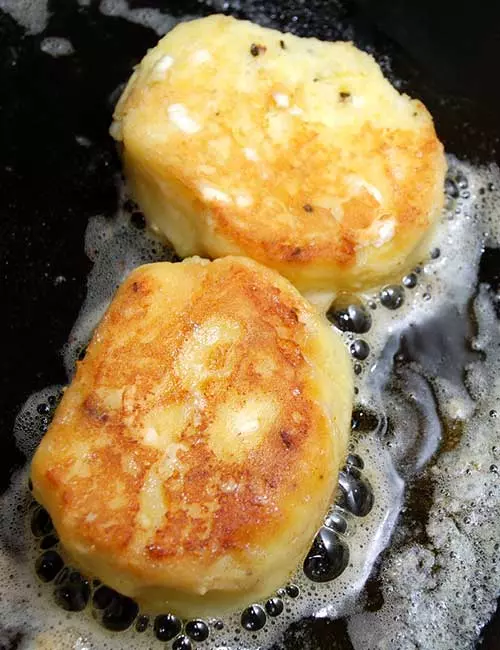
What You Need
- Maris Piper potatoes, peeled and chopped: 500 g
- Small onion, peeled and roughly chopped: 1
- Egg, lightly beaten: 1
- Soft goat cheese, mashed with a fork: 50 g
- Plain flour: 60 g
- Salt and black pepper
- Vegetable oil, for frying (you can use regular cooking oil too)
Let’s Make It!
- Preheat the oven to 180o C/160o C/gas mark 5.
- Blitz the potato and onion in a food processor.
- Squeeze out as much moisture as possible over a colander.
- Pat the mixture dry with some kitchen paper to make sure it is as dry as it can get.
- Mix in the egg, goat cheese, and flour, and season with salt and pepper.
- Heat the vegetable oil in medium pan over medium heat.
- Carefully drop in large dessert spoonfuls or ice cream scooper full of the mixture into the pan and fry the potato cakes for 2 minutes on each side.
- Place in the oven for 10 minutes.
- Serve with some tangy ketchup or mildly dressed crunchy salad.
After an overdose of potatoes and oil, let’s move on to making something that’s fresh, herby, tasty, and detoxifying.
2. Sweet-n-Salt Goat Cheese And Berry Salad
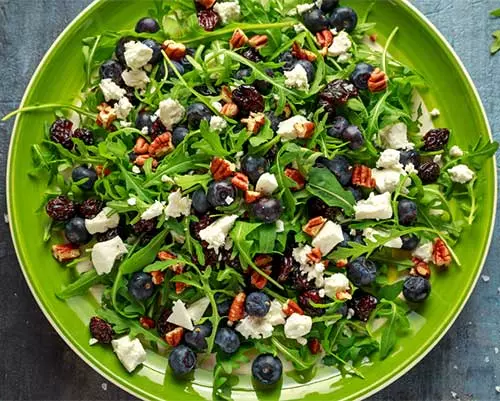
What You Need
- Torn romaine lettuce or arugula leaves: 3 cups
- Blueberries: ½ cup
- Dried cranberries: ¼ cup
- Sunflower seeds: ¼ cup
- Walnut pieces: ¼ cup
- Crumbled goat cheese: ¼ cup
- Maple syrup: ¼ cup or to taste
- Grapeseed oil or olive oil: ¼ cup or to taste
- Salt: to taste
Let’s Make It!
- Toss the romaine lettuce, blueberries, dried cranberries, sunflower seeds, walnut pieces, and goat cheese in a large bowl.
- Pour the maple syrup, and grapeseed oil over the salad, one at a time. Toss until the salad is evenly coated.
- Season with salt.
- Binge on it – because it is free of carbs and guilt.
Amber, a blogger, shares her latest food obsession – goat cheese. She mentions that she first tasted goat cheese in high school and has enjoyed it on and off ever since. She shares her two favorite goat cheese dishes, writing, “My favorites right now are egg white and goat cheese omelet for breakfast and a salad for lunch (i).”
The versatility of goat cheese as an ingredient is amazing! It is an ideal replacement for all the high-fat, cow cheese varieties in business. However, it may not be good for all. Check out the next section to learn about the potential risks of consuming goat cheese.
Side Effects Of Goat Cheese
Goat cheese seems to be generally safe for most people. However, individuals who are lactose intolerant or allergic to goat milk proteins may experience adverse effects. Lactose intolerance may cause bloating, gas, and diarrhea. Those allergic to the goat milk proteins may experience hives or itching or other severe reactions like difficulty breathing or anaphylaxis. Hence, practice caution. Individuals who could be allergic to goat cheese may instead prefer other variants like cheddar or blue cheeses, which may contain negligible amounts of lactose.
After considering the possible side effects of goat cheese, it is equally important to focus on proper purchasing and storage techniques to ensure its quality. Scroll down to know more.
Ways To Buy And Store Goat Cheese
- Look for goat cheese that is soft, creamy, and free of any visible mold.
- Pick the best quality of cheese with as few preservatives and additives as possible.
- Buy enough goat cheese to eat within a week or two because it has a shorter shelf life than harder cheeses.
- Purchase from organic or nearby farmers whenever you can for more freshness and fewer additives.
- Goat cheese should often be kept in the refrigerator’s cheese drawer or bottom shelf, which is the coolest area.
- Since goat cheese often absorbs odors, keep it away from dishes with strong odors.
- If you won’t use the cheese within a couple of weeks, freeze it. Wrap it tightly in plastic wrap and place it in an airtight bag.
Infographic: Top 4 Health Benefits Of Goat Cheese
If you enjoy cheese, you might be curious to know what types could be healthy for you. With its tangy flavor and crumbly consistency, goat cheese has established its reputation as one of the healthiest cheese options. What are the advantages of selecting goat cheese? Check out the infographic below to learn more.
Some thing wrong with infographic shortcode. please verify shortcode syntaxWhat’s The Verdict?
Goat cheese is a delicious cheese with a distinct flavor and rich nutritional profile. It is available in different textures and flavors. The many benefits of goat cheese can be attributed to its wide variety of vitamins and minerals. Also, it has lesser cholesterol, casein, sodium, and saturated fat content than regular cheese. Its nutrient composition may vary based on the processing method used in its preparation. The intake of goat cheese may protect you from diabetes, improve your heart health, and increase the absorption of nutrients from dietary sources. Goat cheese is hypoallergenici , and it best suits those allergic to cow cheese. In addition, it may improve satiety and aid in weight loss. Though it is more expensive than cow cheese, it may save the burning of unnecessary fat. It promotes digestion, boosts immunity, and can be prepared easily at home. In addition, it can be used to prepare many recipes, including salads.
Frequently Asked Questions
Can you eat goat cheese during pregnancy?
Unless the cheese is made from pasteurized goat milk, pregnant women should not consume cheese and fermented dairy products because unpasteurized milk or milk products can cause Listeriosis. This disease is caused by a bacterium and can be lethal to the mother. And in some cases, it gets passed on to the baby too.
Can you freeze goat cheese? How long does it last?
Fresh and soft-ripened goat cheese is very perishable. Wrap it loosely in waxed paper and refrigerate it. This way, it can last for 2-3 weeks. Fresh, spreadable goat cheese or logs can last for up to 2-3 months in the freezer if wrapped tightly.
When you want to use this frozen goat cheese, thaw it very slowly. Preferably, do it overnight. Use it within 2 months from the date of opening.
What jam goes with goat cheese?
Spicy fig jam, marmalade, and cranberry sauce or spiced cranberry jam pair well with goat cheese.
Illustration: Reasons Goat Cheese Is Better Than Cow Cheese

Image: Stable Diffusion/StyleCraze Design Team
Goat cheese is packed with nutrition! Watch this video and learn about its amazing health benefits, like improved digestion, stronger bones, and better heart health.
Personal Experience: Source
StyleCraze's articles are interwoven with authentic personal narratives that provide depth and resonance to our content. Below are the sources of the personal accounts referenced in this article.
i. Blog resurrection- my latest food obsessionhttps://foodchoicesandhabits.blogspot.com/
References
Articles on StyleCraze are backed by verified information from peer-reviewed and academic research papers, reputed organizations, research institutions, and medical associations to ensure accuracy and relevance. Read our editorial policy to learn more.
- “Milk Fatty Acid Profiles in Different Animal Species: Focus on the Potential Effect of Selected PUFAs on Metabolism and Brain Functions”, US National Library of Medicine.
- “Sodium Intake and Health Outcomes”, US National Library of Medicine.
- Sodium Intake As A Cardiovascular Risk Factor A Narrative Review, US National Library Of Medicine
- “A1 beta-casein milk protein and other environmental pre-disposing factors for type 1 diabetes” US National Library of Medicine.
- “The Role of Vitamin D and Calcium in type…” Journal of Clinical Endocrinology and Metabolism, US National Library of Medicine
- Nutritional and Medicinal Superiority of Goat Milk over Cow Milk in Infants
- Cheese, goat, hard type https://fdc.nal.usda.gov/food-details/172197/nutrients
Read full bio of Heather M. Duquette-Wolf
Read full bio of Swathi Handoo
Read full bio of Ravi Teja Tadimalla
Read full bio of Himanshi Mahajan

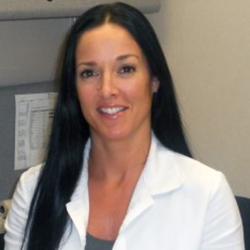





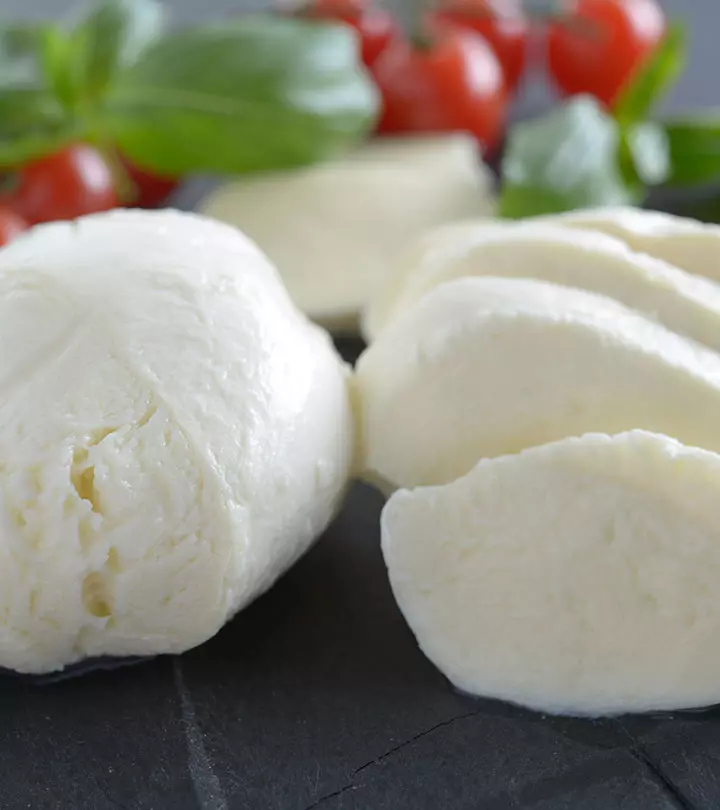
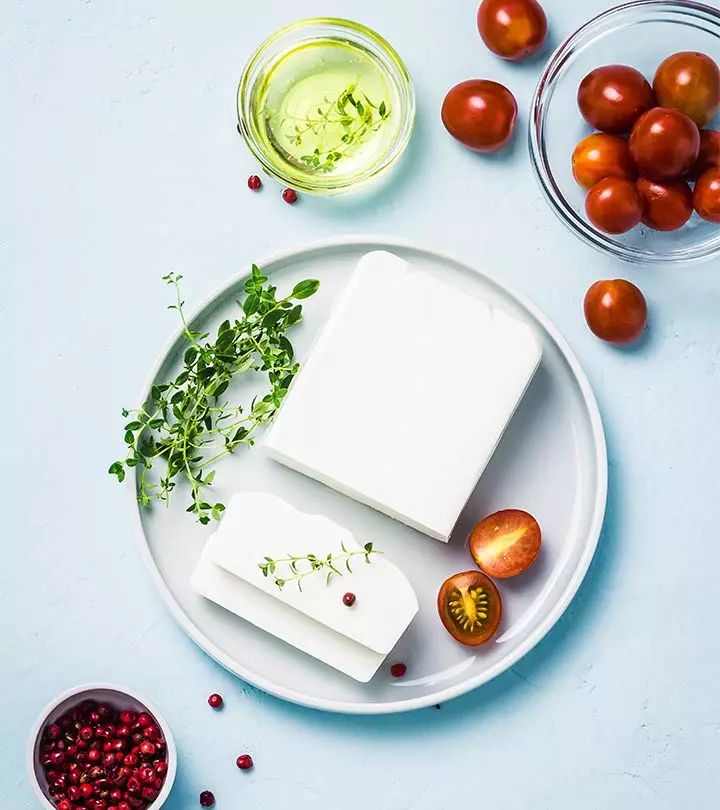
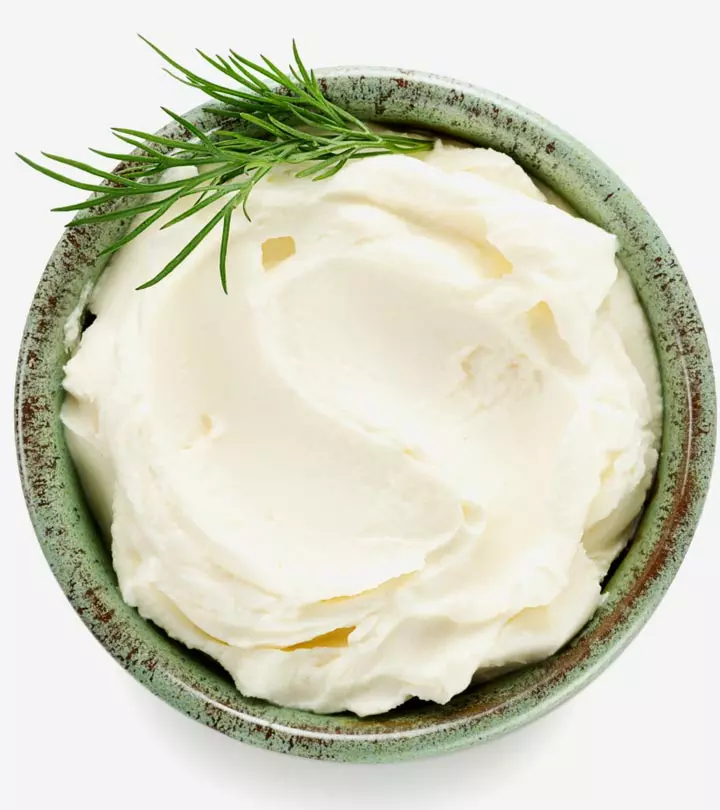
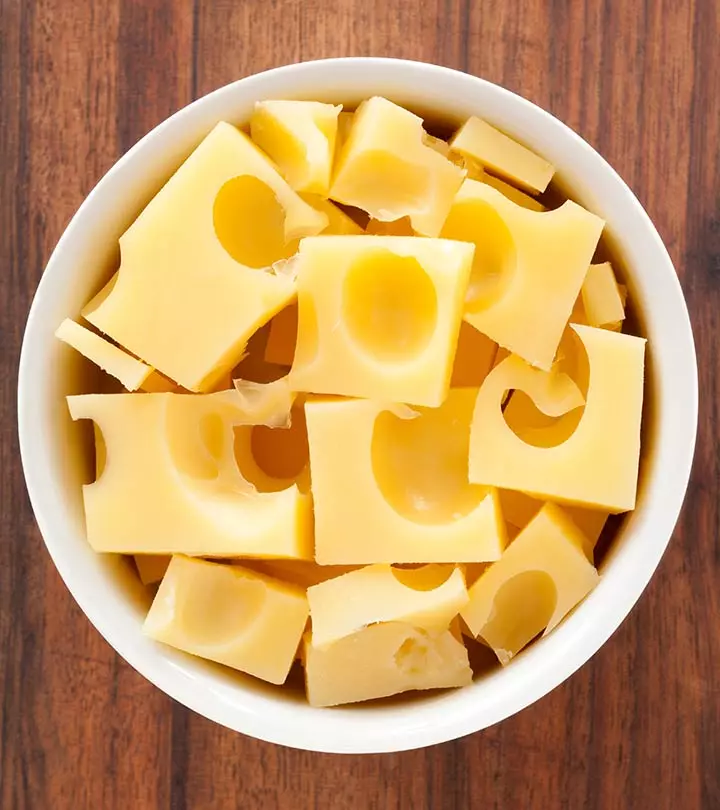
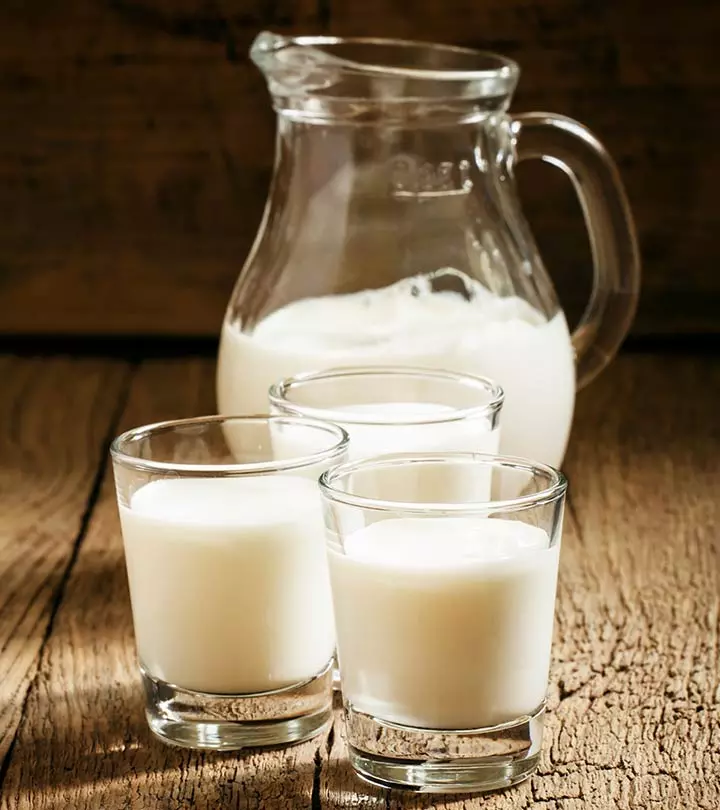
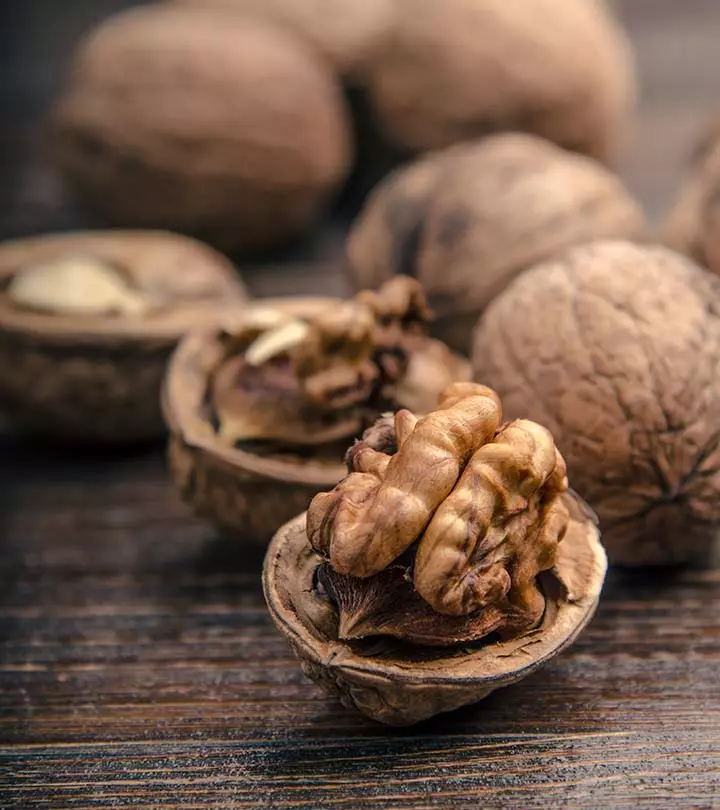
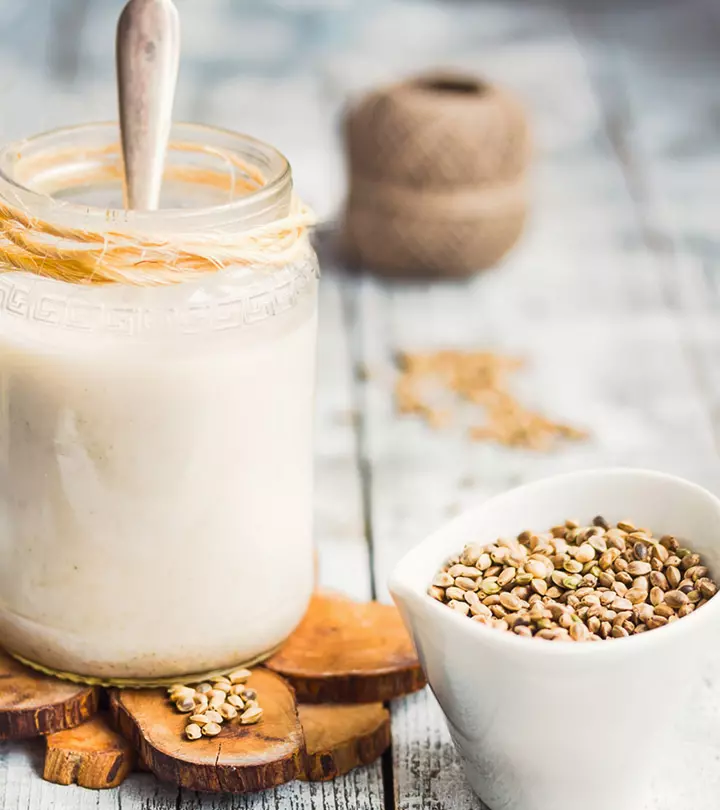

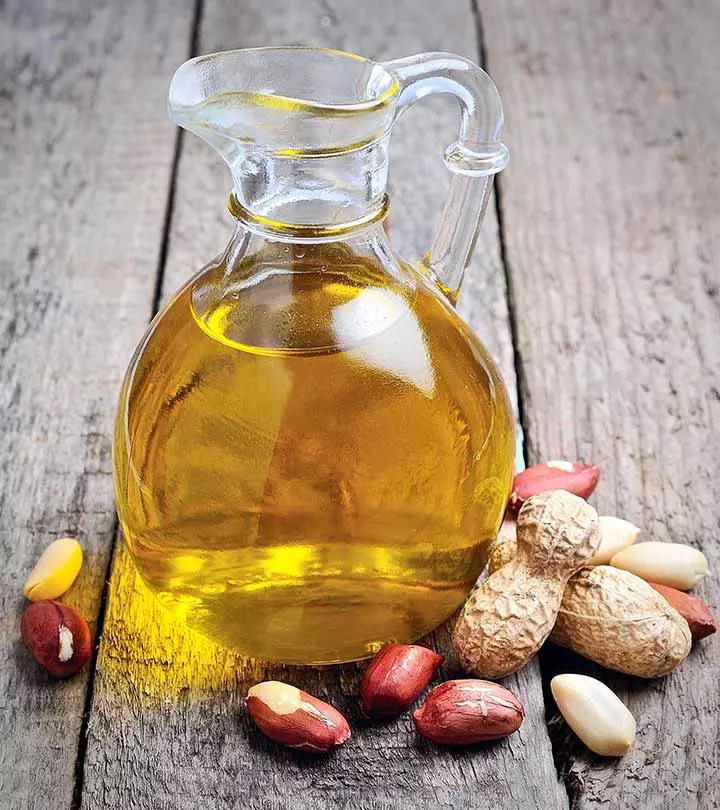

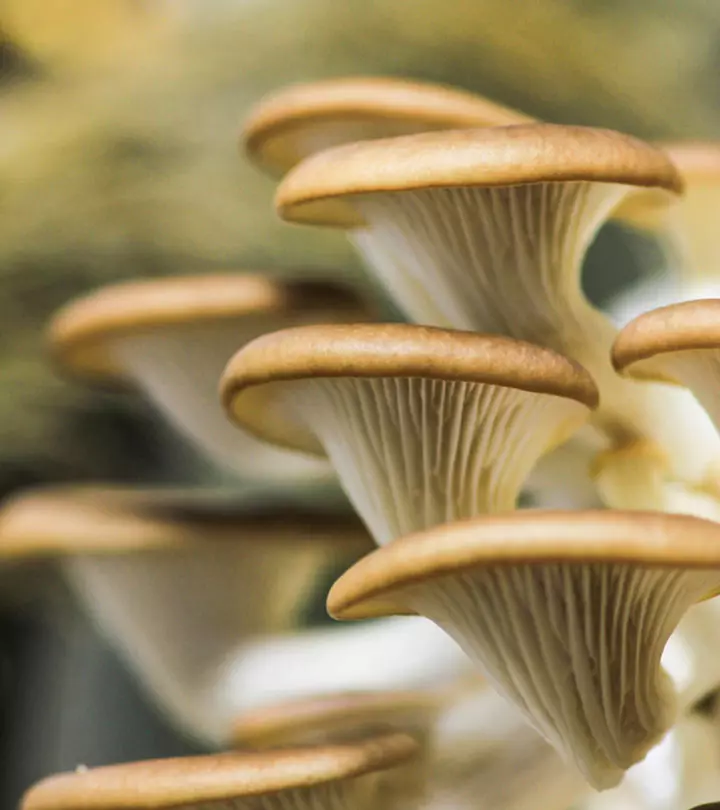
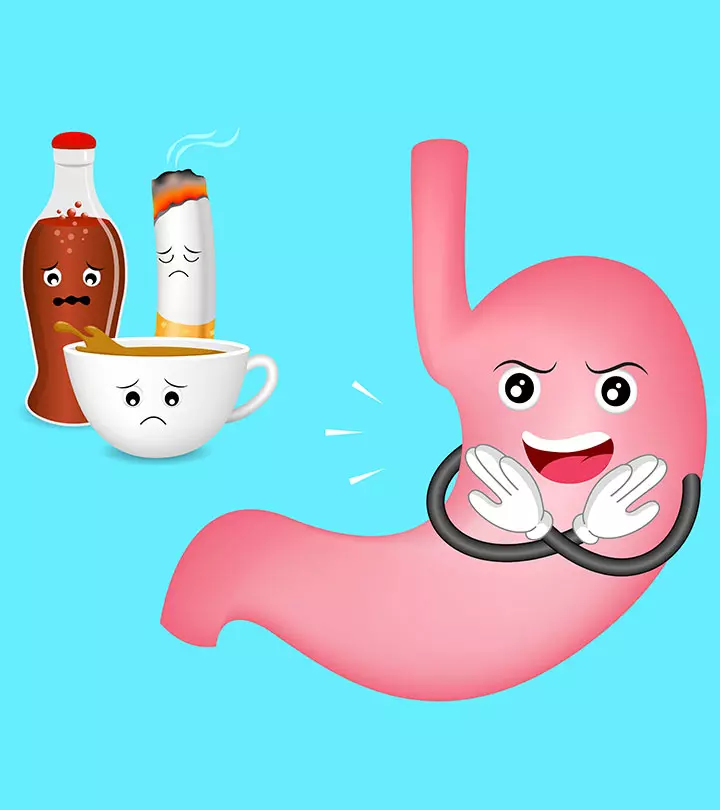

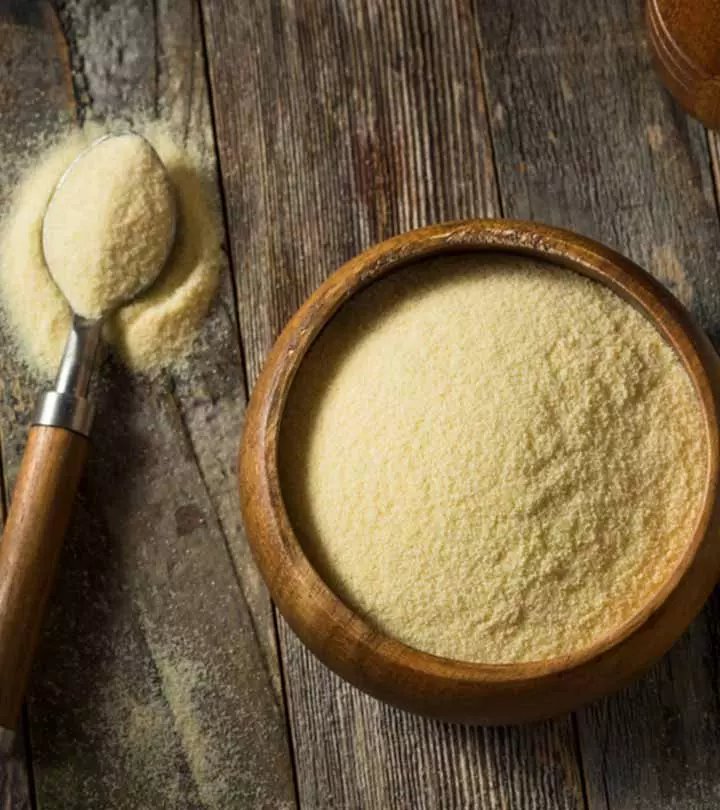


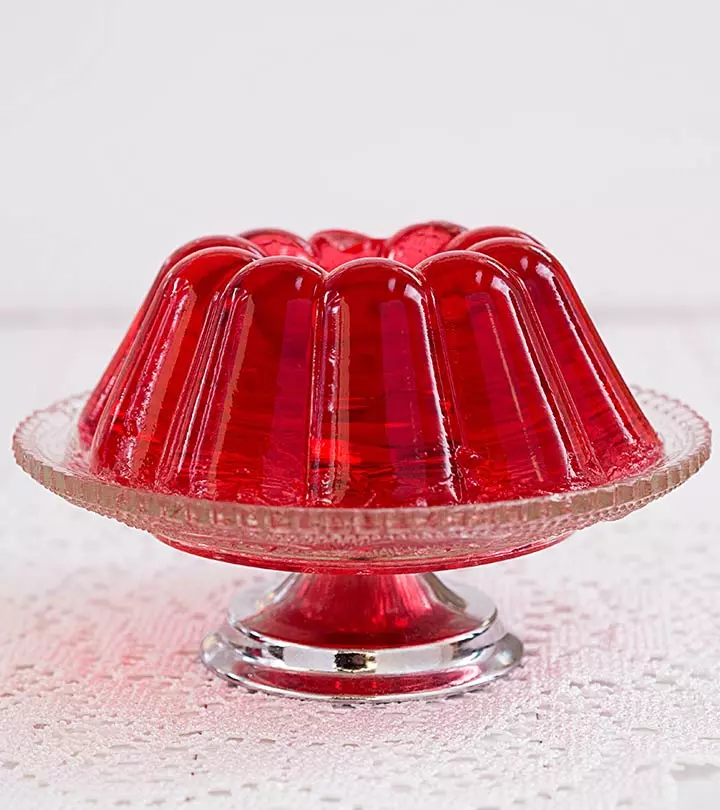

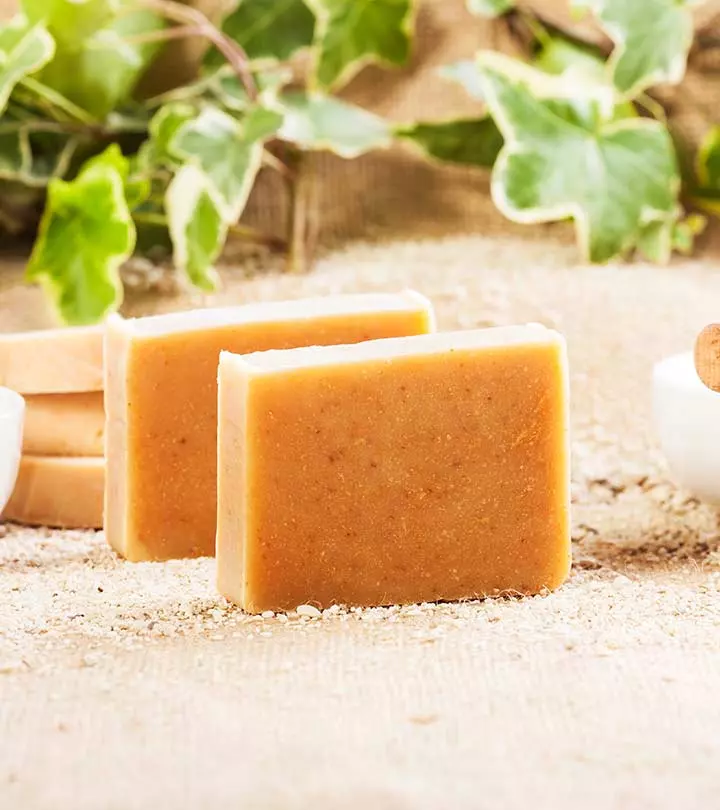
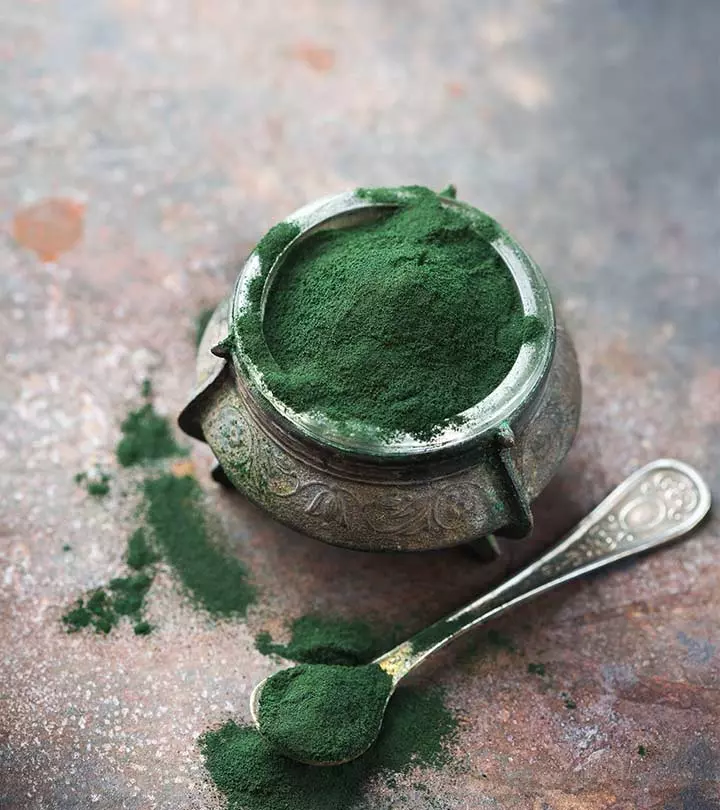
Community Experiences
Join the conversation and become a part of our empowering community! Share your stories, experiences, and insights to connect with other beauty, lifestyle, and health enthusiasts.